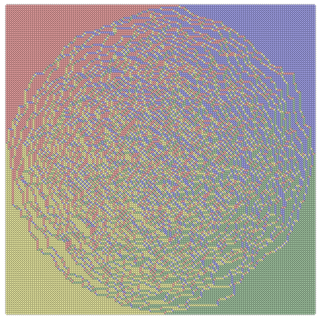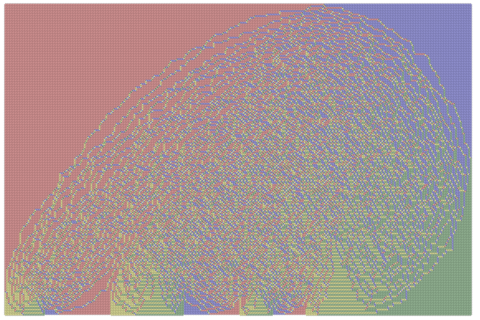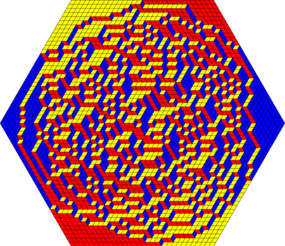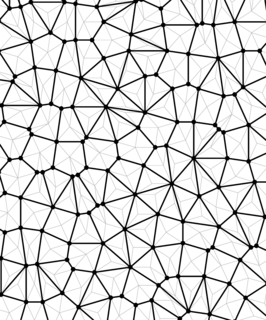Mathematical gallery
Here are results of my attempts to simulate random combinatorical objects related to my research interests.
Tiling with dominos and rhombi
A uniform tiling of an Aztec diamond of size 160 with dominos. Click on the image for a vector version.
A tiling of an Aztec rectangle with special boundary conditions with periodic weights along each row. This is an example of a Schur process. Click on the image for a vector version.

A uniform boxed plane partition with a large number of boxes, generated using Boltzmann samplers and Pak’s bijection.1
Two independent uniform domino configurations of a 141x141 rectangle deprived from a corner: the blue one does not cover the lower left corner, and the red one does not cover the upper right corner. A path is obtained by following alternatively red and blue dominos from the lower left to the upper right corner. This path is conjectured to converge to a SLE4 in the scaling limit. Click on the image for a larger example in a 201x201 rectangle or here for just just the curve in a 1001x1001 rectangle.
A uniform tiling of a 30x30x30 hexagon by lozenges, generated using Propp and Wilson coupling from the past algorithm.
Temperley’s bijection between a spanning tree of a 20x15 rectangle (in black) and a domino tiling of 41x31 rectangle deprived from its lower left corner. The grey arrows represent the dual of the black tree which is also a tree if consider the outside of the rectangle as a vertex of that dual tree. Both trees are oriented towards their roots: the removed corner and the outer dual vertex for the primal and dual tree respectively.
Other models from combinatorics and statistical mechanics
A uniform grove of size 100 generated by the grove shuffling algorithm 2. This random object exhibits an arctic circle phenomenon 3.
A piece of an infinite isoradial graph (in black) and the underlying quadgraph, providing a tiling of the plane with rhombi.
The exploration of a critical site percolation configuration in a “rectangle” in the triangular lattice. The discrete curve converges to a SLE6.
Spectral curves
The evolution of a family of amoebas of genus 1 curves
The amoeba of a genus 1 Harnack curve blowing up, related to the temperature change in the Ising model.
References
-
Random Sampling of Plane Partitions, O. Bodini, É. Fusy and C. Pivoteau, Combinatorics, Probability and Computing (2010), 19: 201–226) ↩
-
The Cube Reccurrence, Gabriel D. Carroll, David E Speyer ↩
-
An arctic circle theorem for groves, T. K. Petersen, D. Speyer ↩







